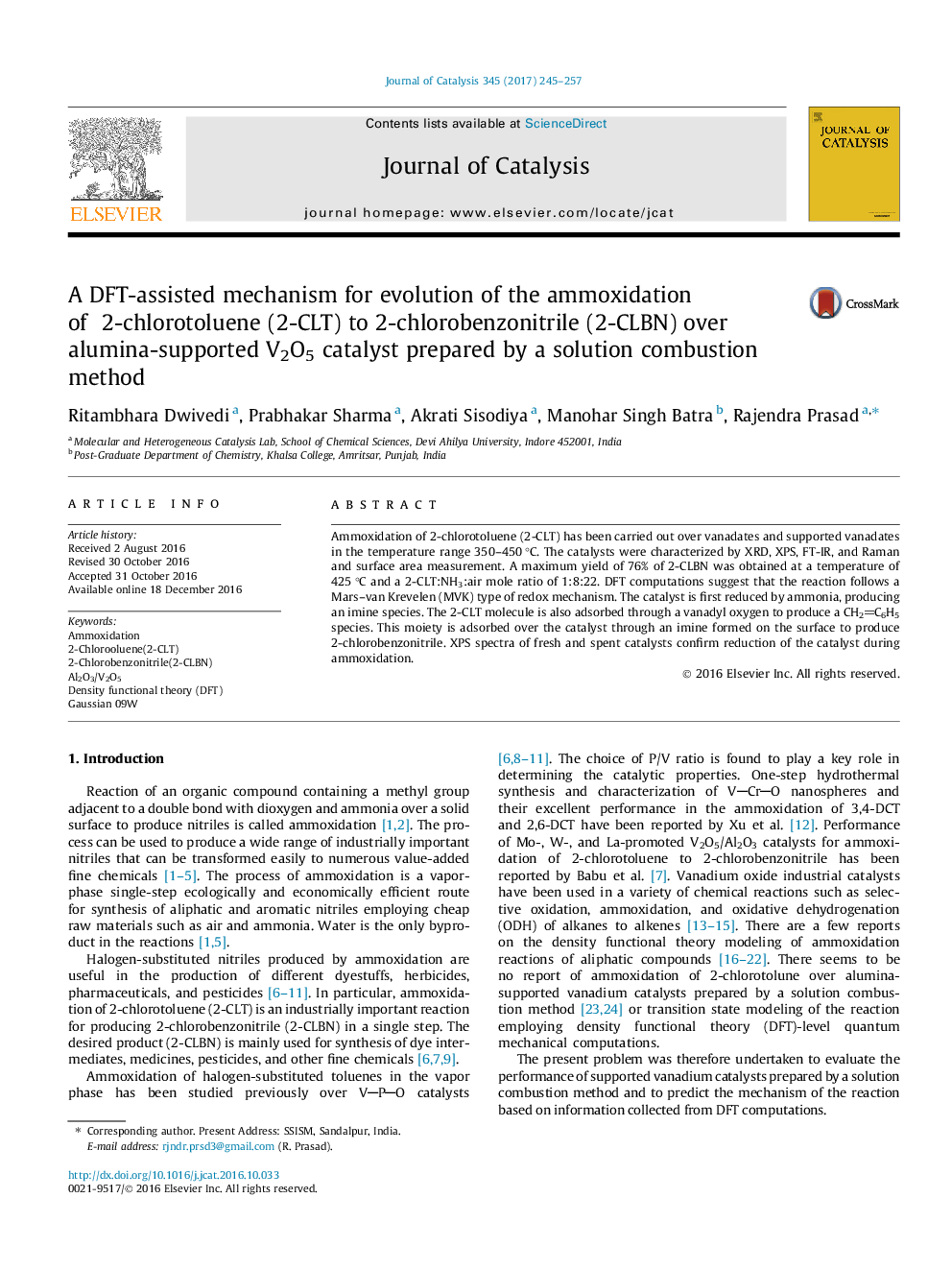| Article ID | Journal | Published Year | Pages | File Type |
|---|---|---|---|---|
| 6455669 | Journal of Catalysis | 2017 | 13 Pages |
â¢Ammoxidation of 2-chlorotoluene over alumina-supported V2O5 catalyst prepared by solution combustion method has been studied.â¢A maximum yield of 76% of 2-CLBN was obtained at a temperature of 425 °C.â¢A mechanism for the reaction is proposed via the use of DFT.â¢We attempted to report the various sites in the catalyst using DFT.
Ammoxidation of 2-chlorotoluene (2-CLT) has been carried out over vanadates and supported vanadates in the temperature range 350-450 °C. The catalysts were characterized by XRD, XPS, FT-IR, and Raman and surface area measurement. A maximum yield of 76% of 2-CLBN was obtained at a temperature of 425 °C and a 2-CLT:NH3:air mole ratio of 1:8:22. DFT computations suggest that the reaction follows a Mars-van Krevelen (MVK) type of redox mechanism. The catalyst is first reduced by ammonia, producing an imine species. The 2-CLT molecule is also adsorbed through a vanadyl oxygen to produce a CH2C6H5 species. This moiety is adsorbed over the catalyst through an imine formed on the surface to produce 2-chlorobenzonitrile. XPS spectra of fresh and spent catalysts confirm reduction of the catalyst during ammoxidation.
Graphical abstractAmmoxidation of 2-chlorotoluene (2-CLT) over alumina-supported V2O5 catalyst has been optimized and a mechanism for the reaction has been proposed using DFT.Download high-res image (96KB)Download full-size image
